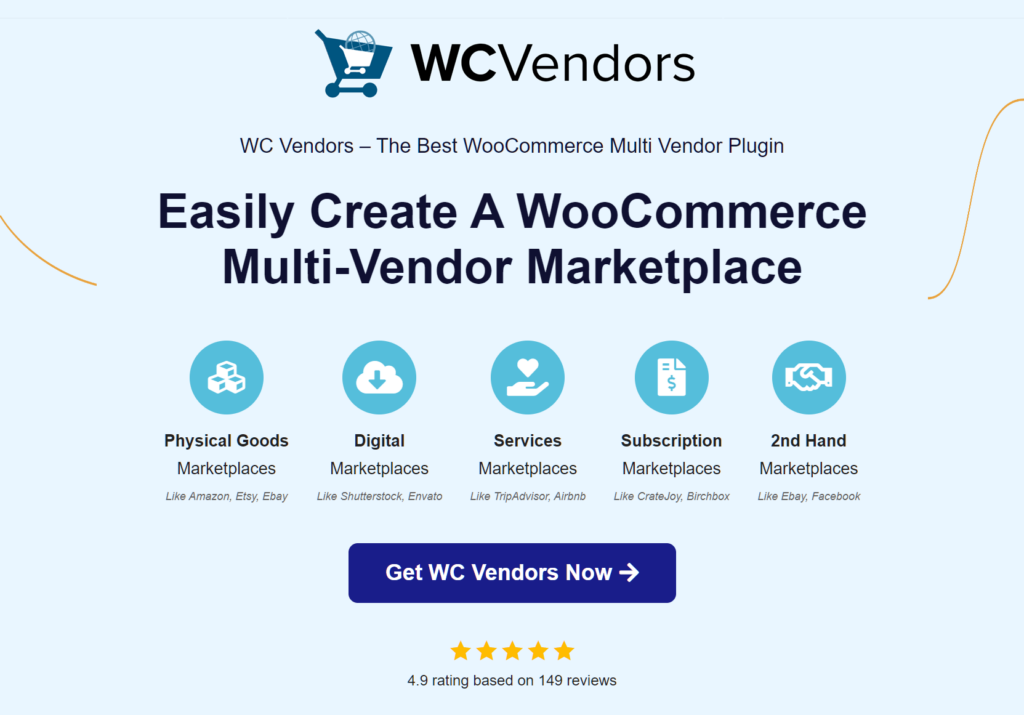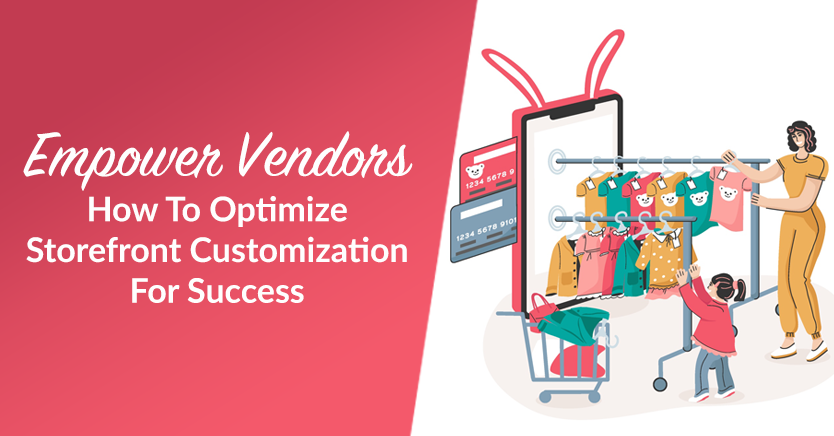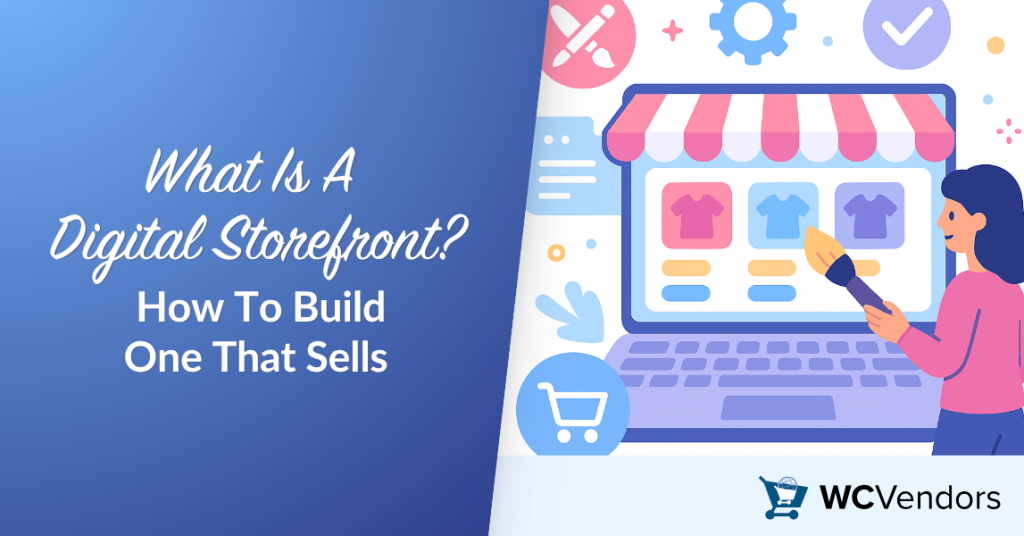
A digital storefront connects your customers to your business online through a structured, intuitive shopping experience. It includes both visual elements—such as product images and layout—and technical features like navigation and responsiveness.
Shoppers form opinions within seconds. Therefore, a clear, fast, and organized storefront builds trust quickly and encourages them to stay long enough to make a purchase.
If you run a WooCommerce marketplace with WC Vendors, your storefront carries even more weight. It represents the collective presence of multiple vendors. As a result, it must strike a balance between consistency and enough flexibility to reflect each seller’s unique brand.
What Is A Digital Storefront?
A digital storefront functions as the online counterpart of a physical retail shop. It includes the homepage, product listings, navigation menus, and vendor profile pages. Every shopper interaction—from browsing to checkout—happens through this interface.
Moreover, a digital storefront involves technical components like SEO structure, performance optimization, and conversion-focused navigation. These back-end features support the customer-facing design and help your store operate smoothly.
If you manage a WooCommerce marketplace, your digital storefront acts as the central hub for all vendors. It allows shoppers to browse and purchase products from different sellers through one consistent experience.
What Makes A Good Digital Storefront?
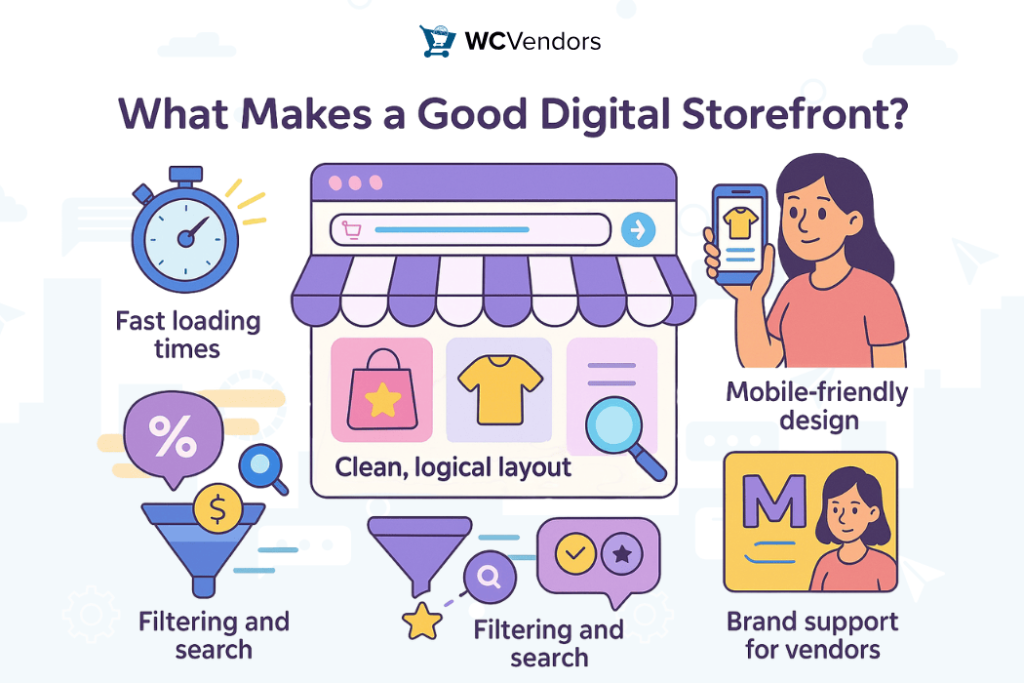
Successful storefronts don’t just look nice. They work efficiently and keep shoppers engaged.
Here’s what to prioritize:
- Clean, logical layout: Avoid clutter. Make it easy to navigate between categories, search results, and product pages.
- Fast loading times: Page speed directly impacts conversions. Compress images, avoid heavy scripts, and use caching plugins.
- Mobile-friendly design: Most buyers shop from their phones. A responsive design is non-negotiable.
- Filtering and search: Let users sort by price, popularity, or attributes. Especially important in a WooCommerce multi-vendor marketplace.
- Brand support for vendors: Each vendor needs their own storefront identity within the shared marketplace.
Together, these elements give visitors a clear sense of direction and build trust from the start. Up next, let’s walk through how to create your own digital storefront step by step.
Step-By-Step: How To Build A Digital Storefront That Converts
Your digital storefront is the gateway to your entire WooCommerce marketplace. Before we get into the steps, it’s important to understand how each part works together to shape customer experience and vendor success.
Let’s break it down.
1. Choose a WooCommerce Marketplace Plugin
Start by selecting a plugin that supports multi-vendor functionality, such as WC Vendors. This allows you to create multi-vendor marketplace and allow sellers to manage their products independently while maintaining consistency across your entire WooCommerce marketplace.
2. Customize the Storefront Design
Next, use a flexible theme that aligns with your branding. Customize colors, fonts, and layouts to create a storefront that feels polished and intuitive.
If you need help, follow this WooCommerce storefront customization guide for step-by-step instructions.
3. Improve Product Pages
Also, make sure product titles are specific, keywords are relevant, and calls-to-action are clear. Avoid cluttering the top of the page. Instead, organize product content in digestible sections.
Moreover, if you’re running a multi-vendor marketplace, it’s worth sharing this product listing optimization guide with your vendors. It covers best practices for writing descriptions, uploading images, and managing attributes.
4. Streamline the Checkout Experience
Keep the checkout simple and direct. Remove unnecessary steps, enable guest checkout, and ensure mobile users don’t struggle to complete their purchase.
5. Guide Vendors Effectively
Additionally, provide onboarding material for new vendors. Share templates, design tips, image specs, and SEO recommendations so everyone follows the same quality standards.
This level of guidance not only improves your digital storefront but also sets your WooCommerce marketplace up for long-term success.
Don’t Forget The Technicals: Speed, SEO, And Mobile
Design alone doesn’t cut it. Buyers quickly notice if your site loads slowly or isn’t mobile-friendly. Search engines track these issues as well. Ultimately, poor performance can lead to lost traffic and lower conversion rates.
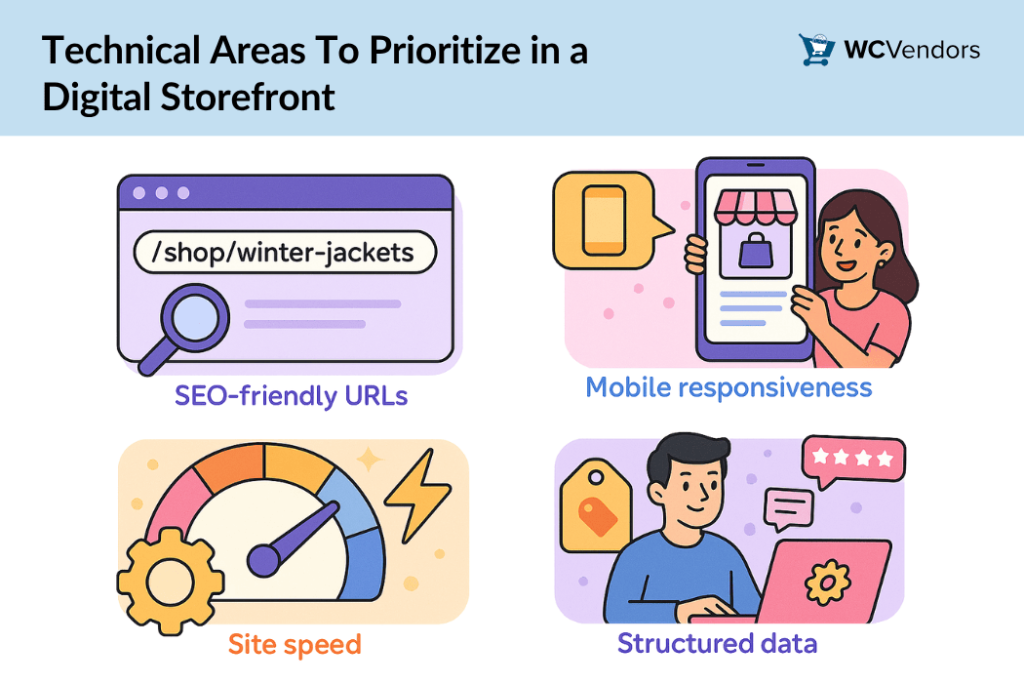
Key Technical Areas To Prioritize:
- SEO-friendly URLs: Use readable slugs like
/shop/winter-jacketsinstead of random numbers. - Mobile responsiveness: Your storefront should look great on phones and tablets.
- Site speed: Use caching, lazy loading, and minimal third-party scripts.
- Structured data: Add schema markup for products and reviews.
To learn more about optimizing your storefront for search engines, explore this detailed guide on SEO for marketplaces. It covers everything from keyword placement to technical structure.
Why Digital Storefronts Matter In Multi-Vendor Marketplaces
In a WooCommerce multi-vendor site, your storefront acts as the unifying element. It brings all vendors together under a single, trustworthy shopping experience that customers can rely on.
Most shoppers don’t think about the number of sellers behind the scenes. Instead, they focus on product discovery, clear product descriptions, and smooth checkout. A well-structured storefront makes those things possible and keeps them coming back.
Moreover, WC Vendors supports this structure by giving each seller the tools to build their own branded presence within a shared marketplace framework. This keeps the overall site cohesive while giving vendors the flexibility to shine.
Additionally, a well-designed storefront:
- Encourages repeat purchases
- Improves vendor accountability
- Reduces customer service issues
- Raises marketplace authority
Together, these factors show why your digital storefront deserves attention. Getting this right can lead to more conversions, better vendor experiences, and long-term marketplace growth.
💡 Did you know? You can now use AI to generate SEO-optimized product descriptions using StoreAgent. In fact, StoreAgent offers a suite of tools to help vendors streamline listings, automate writing tasks, and enhance their digital storefronts—making setup and management easier than ever.
Conclusion
You don’t need a perfect storefront to start. You just need a digital storefront that functions reliably, supports customer needs, and adapts as your WooCommerce multi-vendor marketplace grows.
Over time, the right adjustments will help you improve both vendor engagement and customer experience.
To recap, here’s what you need to focus on:
- What Is a Digital Storefront?
- What Makes a Good Digital Storefront?
- How To Build a Digital Storefront That Converts
- Technical Tips for SEO and Speed
- Importance in Multi-Vendor Marketplaces
Want to see how your storefront could look? Explore our pricing plans or try out the WC Vendors demo today.
